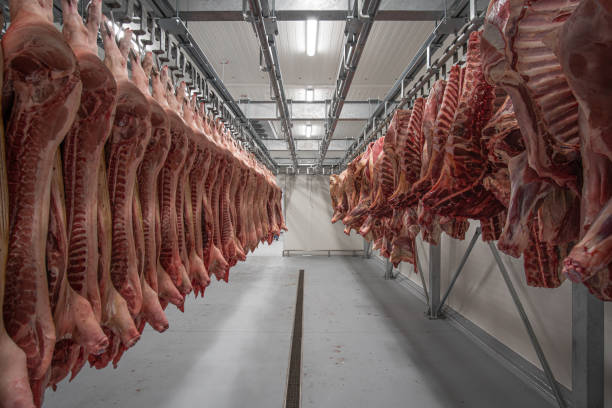“It is a way for consumers to choose what products they consume and how they do it, so that they can reward producers that are aligned with their values.”
Diego Heinrich is the CEO of Origino and co-founder of Carnes Validadas. He was a member of the board of directors of the Argentine Association of No-Till Farmers and vice president of the Argentine Corn and Sorghum Association.
Heinrich is an agronomist from the Universidad Nacional de Mar del Plata, with an MBA from the Universidad Nacional del Centro de la Provincia de Buenos Aires.
The Argentine platform Carnes Validadas allows the management and transfer of data from different links in the meat production chain, informing consumers about chain certifications, age and weight of animals, type of feed consumed, etc.

Diego Heinrich, CEO of Origino and co-founder of Carnes Validadas.
AgriBrasilis – What is a blockchain? Why is this technology a good option for traceability?
Diego Heinrich – Blockchain is a ledger technology that allows secure storage and validation of data and transactions. It is based on a decentralized network that maintains identical copies of a shared ledger.
Once information is added to the blockchain, it is virtually impossible to modify or remove it, making it secure and reliable.
This technology has primarily been used for cryptocurrencies, but it is also being explored in a variety of commercial and government applications such as product traceability, contract management and online voting.
Blockchain technology can be applied to the meat industry in many ways. For example:
- Transaction Logs: to maintain a secure and reliable record of meat purchases and sale transactions throughout the supply chain, improving efficiency and transparency;
- Traceability: to track meat products throughout the supply chain. Important to meet quality and sanitary standards;
- Contract management: to automate the management of contracts and commercial agreements between companies in the meat sector. It can reduce errors and speed up negotiations;
- Supply Chain Optimization: enables better visibility and coordination between different chain participants.
There are many reasons why a meat company should consider implementing blockchain extended traceability strategies in their supply chains.
It is possible to give consumers the information they need, in terms of sustainability, ethics in production, etc.; meet regulatory requirements, that is, produce free of deforestation, slave or child labor, observing sustainable production practices.
You can digitalize transactions between participants in the production chain, give confidence and transparency to production processes; in addition to controlling and/or retaining suppliers in the supply chains.
AgriBrasilis – How is the traceability system related to the meat certification process in Argentina?
Diego Heinrich – They are complementary to each other. Traceability is defined as the reconstruction of the place or places where transformations into a product were carried out. For example, in livestock, it refers to breeding, rearing, fattening, slaughtering, etc.
When we talk about expanded traceability by origin, it is not just about identifying the cattle head, or its place of origin, with the name of the establishment. We’re talking about photos, videos, robotics, satellite interactions. The amount of data that can be collected, including certifications of locations or production processes, is infinite.
A meat package can, for example, show the history, timeline, photos, videos, etc. The consumer can follow this information by scanning a QR code on the meat package itself.
AgriBrasilis – What is the panorama of food traceability? Is blockchain tracking used in other production chains, besides meat?
Diego Heinrich – Traceability is a communication channel between the first part of a supply chain and the other participants of that sector, including the consumer, from one point of the producing chain to another (“end2end”). This is very important and will be increasingly relevant.
It is a way for consumers to choose what products they consume and how they do it, so that they can reward producers that are aligned with their values. When you connect farmers, producers, processors, retailers, and consumers with an end-to-end approach, you can have supply chains aligned by production values.
READ MORE:

